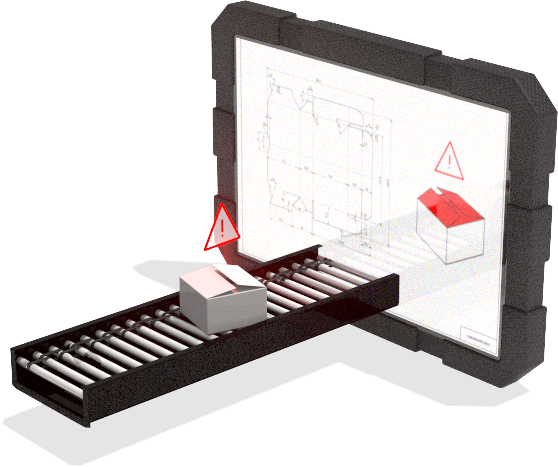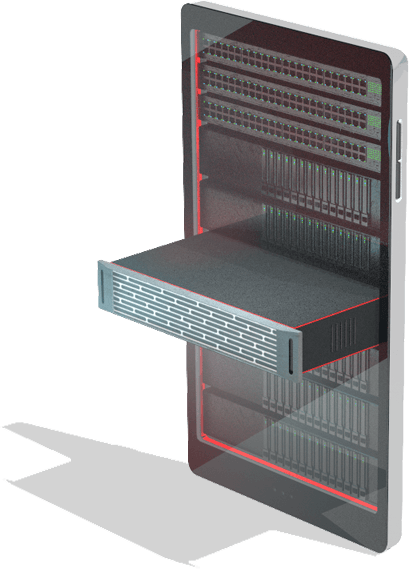Edge isn't a problem. Edge solves problems.
Computing where it does
the most good
Data goes to work in challenging and unlikely places. Places like the International Space Station. Connected vehicles. Factory floors. Ships at sea. The neighborhood pharmacy. Data might have traditionally belonged in the datacenter or cloud, but many important decisions need to happen out here–on the edge.
At Red Hat, we see edge computing as an opportunity to extend the open hybrid cloud all the way to the data sources and end users. Edge is a strategy to deliver insights and experiences at the moment they’re needed.
No one said edge was easy. Connected devices are generating huge volumes of data. Organizations are overseeing increasing numbers of computing locations, some with intermittent connectivity and limited physical access. At the same time, privacy and security have never been more urgent.
Edge computing can solve these challenges while creating new opportunities. Edge is exciting. And edge is everywhere.

There is no doubt that edge computing and cloud computing are intimately tied.
Hear more from Stefanie
edge
premises edge
edge
core
Types of edge
What's your kind of edge?
Where your edge is depends on your organization, architecture, or use case. Red Hat’s approach to edge computing focuses on 3 categories. These categories can overlap, and you can use more than one.
These three categories of edge, which sometimes overlap, make up Red Hat’s areas of focus:
Enterprise edge use cases feature an enterprise data store at the core, in a datacenter or as a cloud resource. The enterprise edge allows users to extend their application services to remote locations.
Operations edge use cases concern industrial edge devices, with significant involvement from operational technology (OT) teams. The operations edge is a place to gather, process, and act on data, right there on site.
Provider edge use cases involve both building out networks and offering services delivered with them, as in the case of a telecommunications company. The service provider edge supports reliability, low latency, and high performance with computing environments close to customers and devices.
Red Hat acknowledges that every edge is different. With open standards and creative thinking we can help you craft an edge strategy that meets your current needs, and adapts to the future.

At the factory edge, you get requirements you don’t have in the cloud. But it’s still something our stack supports.
Hear more from Wolfram
Edge in action
Where edge is making a difference
We’ve seen edge computing transform many fields—manufacturing, automotive, energy, utilities, finance, healthcare, retail, telecommunications, and government. The following examples, representing 3 categories of edge customer, are just a sampling.
Enterprise edge
Thousands of stores on one platform
Extending IT to remote locations can be a challenge for any enterprise. The store around the corner might be a good example.
Chain retailers increasingly use data to offer new services, improve in-store experiences, and keep operations running smoothly. But most stores aren’t equipped with large amounts of computing power. And for pharmacies that keep patient records, data security is a paramount concern.
For these kinds of enterprises, it makes sense to centralize the data storage while extending a uniform app environment out to remote locations. Edge for retail could mean anything from a store manager who uses AI tools for staff scheduling, a pharmacist with a tablet who can visit patients in their homes, or restaurant workers prepping mobile orders ahead of the lunch rush.
The challenges inherent in distributed IT deployments—whether they involve stores, restaurants, branch offices, transit stations, or other types of remote locations—are the kinds of problems that edge computing is built to solve.

Operations edge
Machine learning on the factory floor
The shop floor is pulsing with data, and Industrial Internet of Things (IIoT) sensors provide an unblinking view of factory conditions. That data, analyzed in real time, is leading to new levels of operational and business efficiency.
Achieving these benefits requires an underlying platform that can unify disparate data systems—especially because manufacturing systems traditionally have been isolated from each other.
Red Hat’s blueprint for edge and artificial intelligence and machine learning (AI/ML) in manufacturing calls for a unified ecosystem of Linux® container management with Red Hat® OpenShift®, application services, and storage. Software rollouts can be consistent, following CI/CD and GitOps practices. Analysts can take advantage of artificial intelligence and machine learning model training through a scalable service platform.
Edge computing is helping manufacturers solve problems faster by transforming operations to make plants even more productive.

Provider edge
Fast, advanced mobile networks
As 5G networks spread around the world, service providers are updating their networks to be more efficient and reduce latency, ushering in a new era of apps and improved services for customers.
Many changes are invisible to the mobile user, but enable providers to add capacity fast and reduce costs. Network functions virtualization (NFV) helps providers run network software in virtualized environments on general purpose hardware, rather than on expensive specialized components. In a similar shift, networks are virtualizing their radio access networks (a technology abbreviated as vRAN), which lowers costs and makes upgrades and scaling easier.
Additionally, providers are moving mobile workloads closer to the end user, through an architecture called mobile edge computing or multi-access edge computing (MEC).
Telcos around the globe have adopted unified edge platforms with Red Hat OpenShift to meet these challenges.

The explosion of IoT-enabled connected devices will drive demand for edge computing solutions that process data as close to the end device as possible.
Forrester Research, Inc.,
“Predictions 2021: Edge Computing,” October 2020
Success stories
Red Hat success stories
Red Hat customers are seeing how creative approaches to edge computing make their organizations more efficient.
The Red Hat approach
Bringing creativity to the edge
Red Hatters are deeply involved in the Linux and Kubernetes technologies that drive modern edge computing. We make the connections that support open hybrid cloud strategies, and create blueprints to solve edge challenges across many industries.


